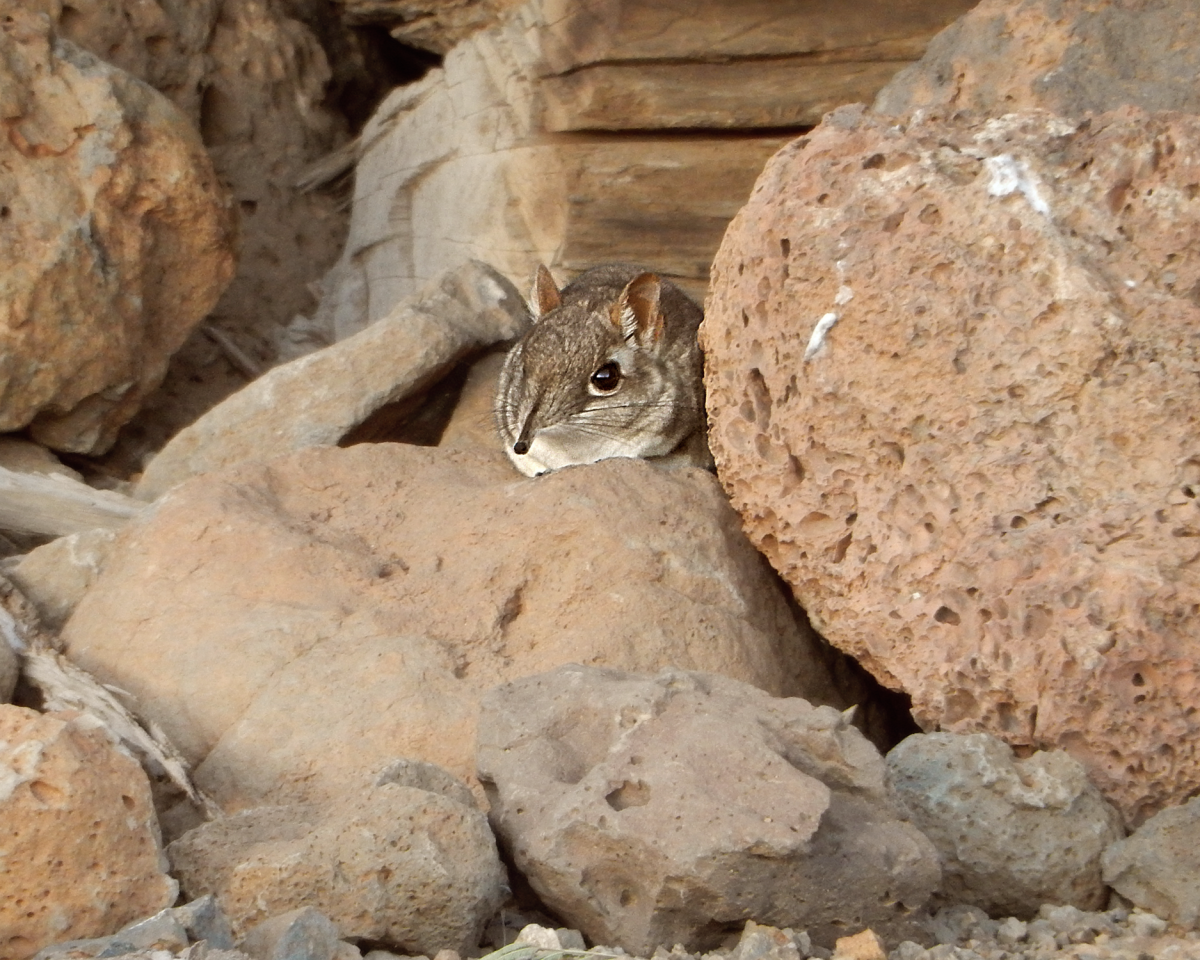A long-lost species has now been rediscovered alive and well. The Somali sengi, a small, insect-eating mammal that hasn’t been seen in over 40 years, has turned up in East Africa, with researchers snapping the first-ever photos and video of them in the wild.
Sengis are a group of adorable little mammals that look like mice, but are actually more closely related to elephants, manatees and aardvarks. As such, they’re often called elephant shrews. Their most distinguishing feature is their trunk-like nose, which they use to hunt down insects.
While most species of sengi are common, the Somali sengi has proven difficult to track down for the last few decades. In fact, the critter hasn’t been seen alive since 1968, and is mostly known from a handful of museum specimens.
That elusiveness earned it a spot on the Global Wildlife Conservation’s list of 25 Most Wanted Lost Species – animals, insects and plants that have been lost to science. The organization launches expeditions to investigate whether these species are still alive in the wild, and if so determine what kind of protections they may need.

Houssein Rayaleh, Association Djibouti Nature
For this expedition, the team journeyed to the East African country of Djibouti, where tips from locals suggested the Somali sengi was still thriving. In the dry rocky landscape that the creatures likely called home, the team laid 1,259 traps in 12 different locations, baited with sweet-smelling food.
To their surprise, they caught a Somali sengi in the very first trap they laid. This species is distinguished from other close relatives by a small tuft of fur on its tail.
“It was amazing,” says Steven Heritage, lead author of the study. “When we opened the first trap and saw the little tuft of hair on the tip of its tail, we just looked at one another and couldn’t believe it. A number of small mammal surveys since the 1970s did not find the Somali sengi in Djibouti – it was serendipitous that it happened so quickly for us.”
The team saw 12 sengis in total, capturing the first ever photos and videos of living Somali sengis. By the end of the expedition, the team was able to make an assessment of the species’ status – they concluded that Somali sengis don’t seem to be under any particular threat, and are fairly abundant across Djibouti, Somalia and maybe even Ethiopia. As such, the team recommended that its entry on the IUCN Red List of Threatened Species be updated to “Least Concern.”
“Usually when we rediscover lost species, we find just one or two individuals and have to act quickly to try to prevent their imminent extinction,” says Robin Moore, a program lead for GWC’s Search for Lost Species. “This is a welcome and wonderful rediscovery during a time of turmoil for our planet, and one that fills us with renewed hope for the remaining small mammal species on our most wanted list, such as the DeWinton’s golden mole, a relative of the sengi, and the Ilin Island cloudrunner.”
With the rediscovery of the Somali sengi, five of the 25 Most Wanted Lost Species have now been found. Others include the Wallace’s giant bee in Indonesia, the silver-backed chevrotain in Vietnam, Jackson’s climbing salamander in Guatemala, and the velvet pitcher plant, also in Indonesia.
The researchers plan to launch a follow-up investigation in 2022, to tag individual sengis with GPS to help answer more questions about how they live.
The research was published in the journal PeerJ. Check out the first-ever video of the Somali sengi below.
Somali Sengi rediscovered
Source: Global Wildlife Conservation
Source of Article